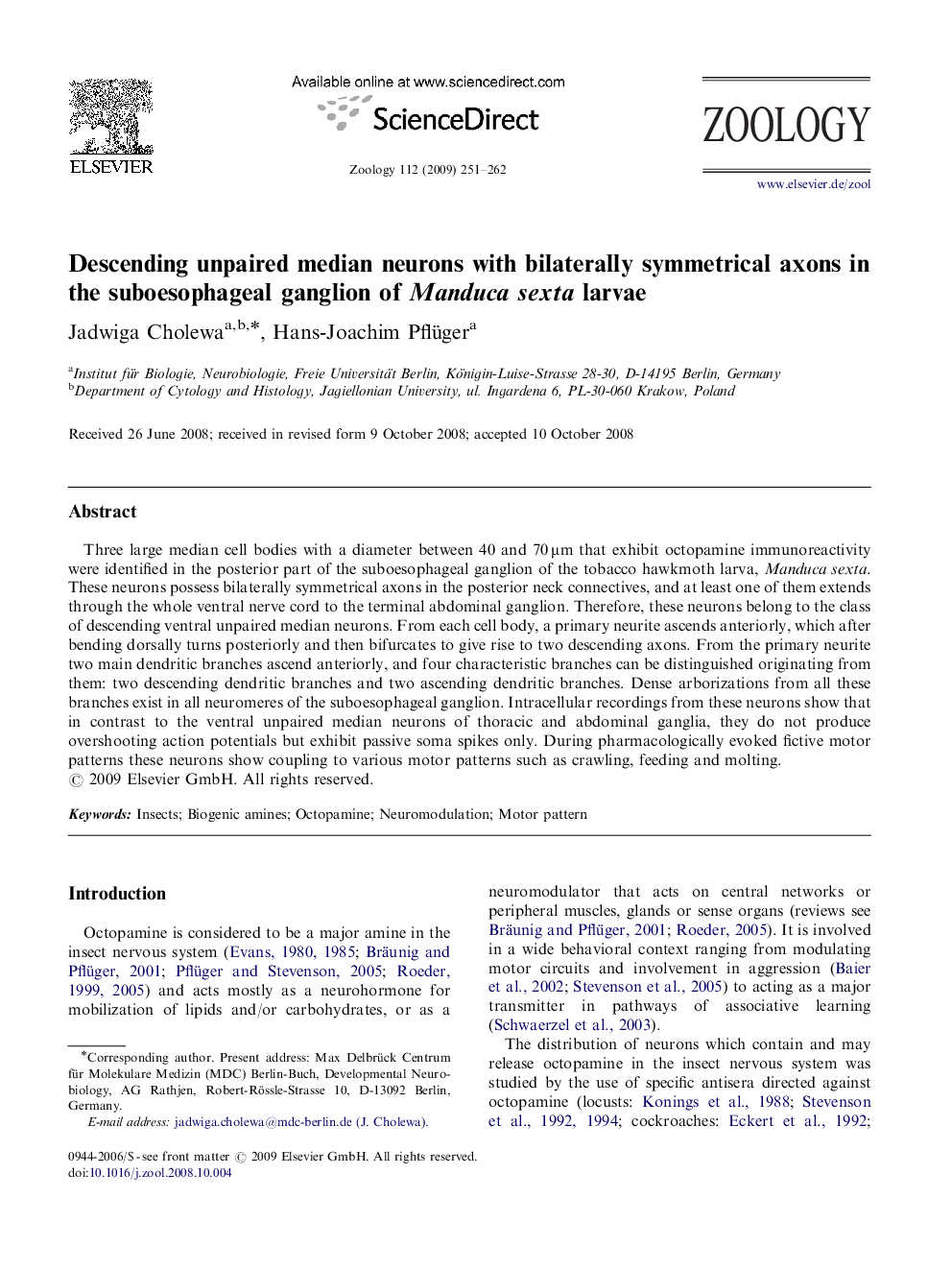| Article ID | Journal | Published Year | Pages | File Type |
|---|---|---|---|---|
| 2791311 | Zoology | 2009 | 12 Pages |
Three large median cell bodies with a diameter between 40 and 70 μm that exhibit octopamine immunoreactivity were identified in the posterior part of the suboesophageal ganglion of the tobacco hawkmoth larva, Manduca sexta. These neurons possess bilaterally symmetrical axons in the posterior neck connectives, and at least one of them extends through the whole ventral nerve cord to the terminal abdominal ganglion. Therefore, these neurons belong to the class of descending ventral unpaired median neurons. From each cell body, a primary neurite ascends anteriorly, which after bending dorsally turns posteriorly and then bifurcates to give rise to two descending axons. From the primary neurite two main dendritic branches ascend anteriorly, and four characteristic branches can be distinguished originating from them: two descending dendritic branches and two ascending dendritic branches. Dense arborizations from all these branches exist in all neuromeres of the suboesophageal ganglion. Intracellular recordings from these neurons show that in contrast to the ventral unpaired median neurons of thoracic and abdominal ganglia, they do not produce overshooting action potentials but exhibit passive soma spikes only. During pharmacologically evoked fictive motor patterns these neurons show coupling to various motor patterns such as crawling, feeding and molting.
